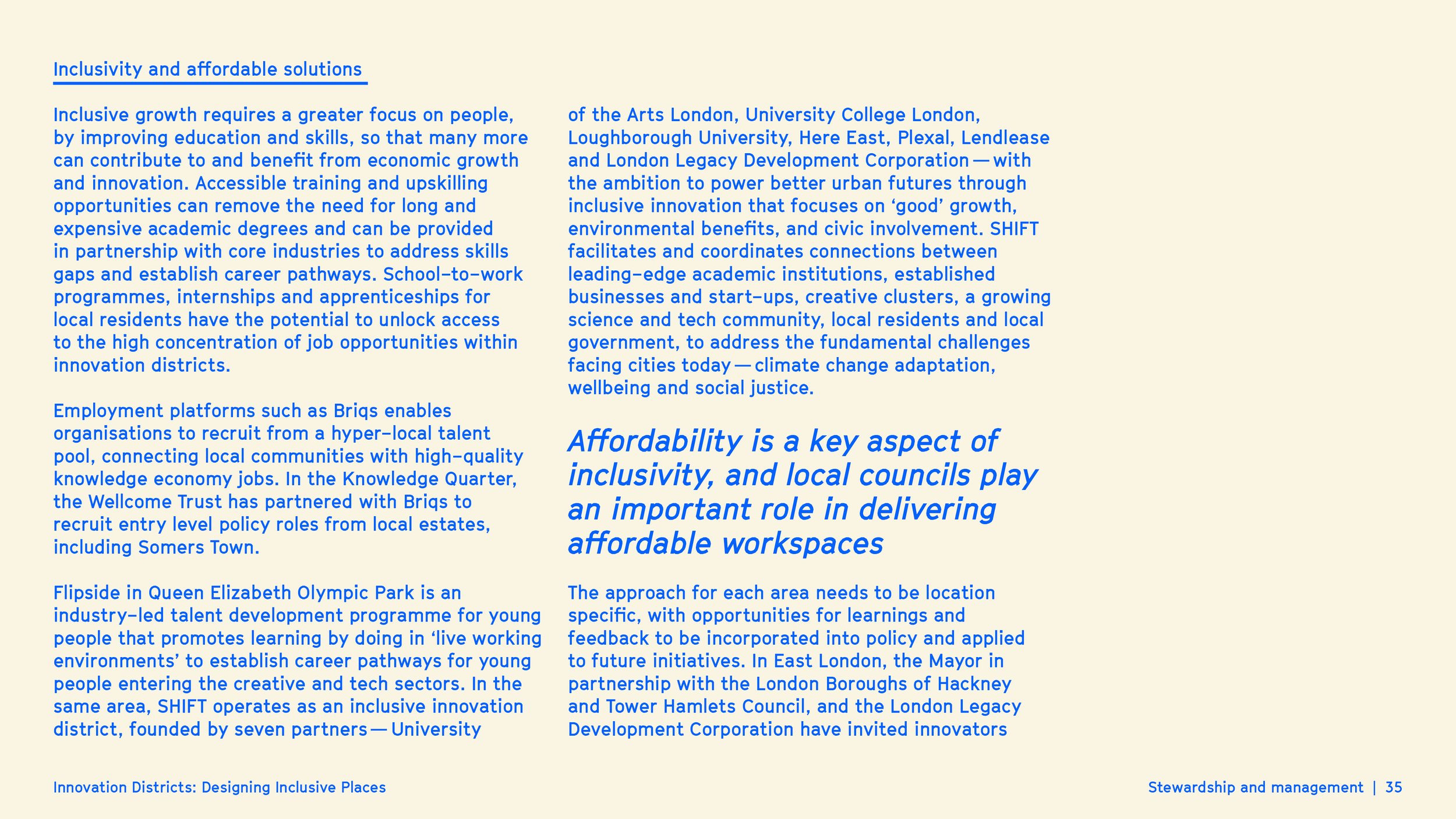Designing Inclusive Innovation Districts.
Client: New London Architecture (NLA)
Date: 2022
Services: Research
This report is intended as a handbook for built environment professionals – landowners, developers, planners, architects, and designers – as well as citizen groups that are involved in growing the next generation of innovation districts. As we embark on a new and more conscious approach to placemaking for these districts we believe there are some key considerations to factor in across all scales and stages of development.
Background
During much of our recent history, innovation has taken place in secluded regional districts and out-of-town campuses that ensure privacy and protect intellectual property. Developed as enclaves surrounded by nature and infrastructure corridors, they are often separated from the life of the city and nearby communities. However, the landscape where innovation takes place has been undergoing wholesale change, and new models have emerged that favour urban vibrancy, diversity and proximity.
In a city context, a blend of large anchor tenants, knowledge-intensive SMEs, academic institutions, think tanks, start-ups and spin-offs can thrive in a culture of open innovation and dynamic competition that accelerates progress, diffusion of knowledge and commercialisation of new ideas. These synergistic ecosystems generate fertile ground for innovation, allowing companies to reach new levels and excel beyond their individual capacity.
However, at a time of rising inequality, these locations are also faced with one of our greatest challenges: inclusive economic growth. The move from out-of-town locations to urban cores has seen many innovation districts rise up to cast a shadow over the diverse urban communities set in and around them, many of which are challenged by poverty, unemployment and social isolation.
Future Places Studio believe that innovation districts should be places where new ideas are nurtured and celebrated, and horizons opened. Where a network of synergistic activities, innovation based or not, elevates the capacity of each individual part. Places that are connected and tuned into the neighbourhoods they serve, for the benefit of people of all backgrounds and capabilities.
Within this vision, the built environment has a critical role to play. Our research for the NLA advocated for an innovation district model that empowers local actors to implement a place-based framework for inclusive economic growth; a multi-stranded approach to placemaking that spans the macro and micro perspectives. This can provide overarching direction whilst inspiring stewardship from the ground up, strategic visioning with pragmatic solutions, and adaptable environments that evolve with needs over time. Equipped with a practical toolkit for change, we can collectively nurture a next generation of equitable, inclusive and responsive innovation districts that revolutionise the models of the past.










